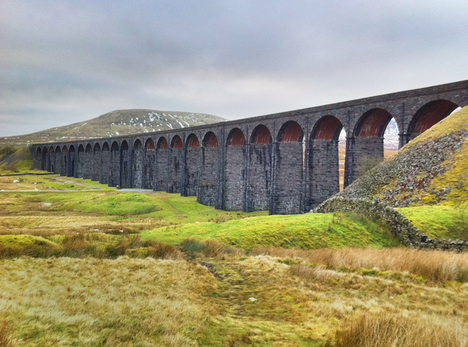 Image by Terry Jackman
Image by Terry Jackman I wonder how many visitors have been drawn to this incredible structure since its construction and how many photographers have captured its majestic beauty?
The facts behind its construction are pretty incredible. Designed by John Sydney Crossley, construction of the viaduct began in 1870. It was officially opened in August 1875.
Ribblehead Viaduct is 440 yards long, 104 feet high (at its highest point) and has 24 arches stretching across Batty Moss. Each arch has a span of 45 feet, and the foundations are around 25 feet deep. Imagine digging down through the hard rock and earth on such an exposed moor with the most primitive tools, especially in the winter months? Apparently 1.5 million bricks were used in its construction.
Around 1000 navvies worked on the site. Work was dangerous and disease rife - over 100 men died during the viaduct’s construction. Shanty towns were built to house the workers, their families and people supplying services to them. These were known by names such as Sebastopol, commemorating the Crimean War and a slightly better class ‘suburb’ was called Belgravia. One of the shanty towns had a wonderful name - Batty Wife Hole – but a horrible story. It's said that it's where after a drunken row, a man called Batty drowned his wife in a stream emerging from the limestone hill. Workers lived in a form of pre-fab house, with pubs, post office, and school on site.
Ribblehead Viaduct is now Grade II* listed and the surrounding land where the shadowy outline of the shanty towns can be seen, are recognised as a scheduled ancient monument.

 RSS Feed
RSS Feed
